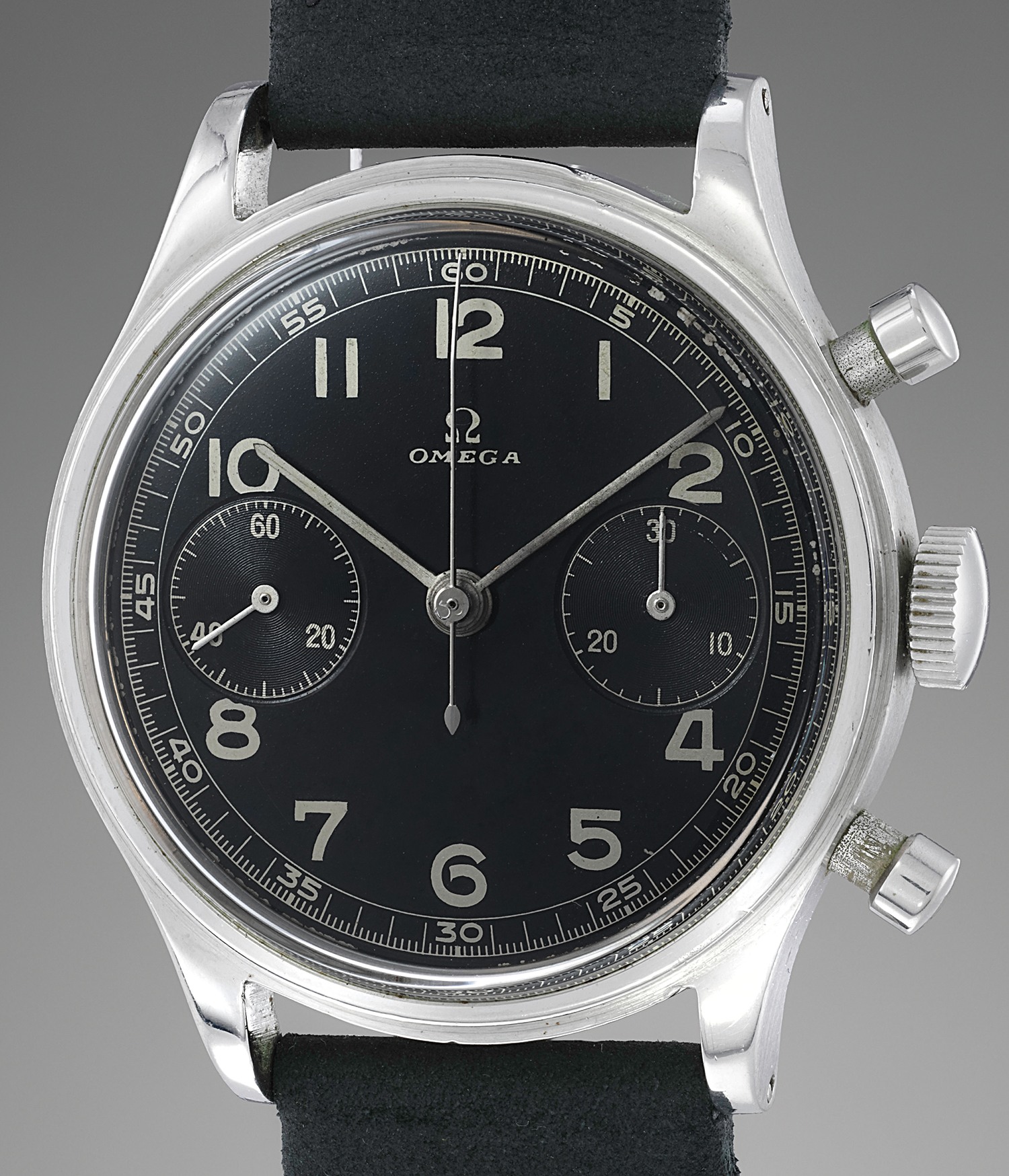



204
Omega
A very attractive stainless steel chronograph wristwatch with black glossy dial and silver script
Full-Cataloguing
The two-body stainless steel case with water resistant caseback has perfectly protected the superb black glossy dial from the effect of time and moisture. The contrast between the black glossy dial and the silver printings is absolutely striking and gives the watch a very powerful and masculine aspect. The case is further completed by two circular chronograph pushers as opposed to the olive shaped pushers found on earlier generations. A strong case with sharp lugs will finish to convince the most demanding collector.
Omega
Swiss | 1848Omega's rich history begins with its founder, Louis Brandt, who established the firm in 1848 in La Chaux de Fonds. In 1903, the company changed its name to Omega, becoming the only watch brand in history to have been named after one its own movements. A full-fledged manufacturer of highly accurate, affordable and reliable watches, its sterling reputation enabled them to be chosen as the first watch company to time the Olympic Games beginning in 1932. Its continued focus on precision and reliability ultimately led their Speedmaster chronograph wristwatch to be chosen by NASA in 1965 — the first watch worn on the moon.
Key models sought-after by collectors include their first, oversized water-resistant chronograph — the reference 2077, early Speedmaster models such as the CK 2915 and 2998, military-issued versions of the Seamaster and oversized chronometer models such as those fitted with their prestigious caliber 30T2Rg.